Your cart is currently empty!
Tag: Reactive
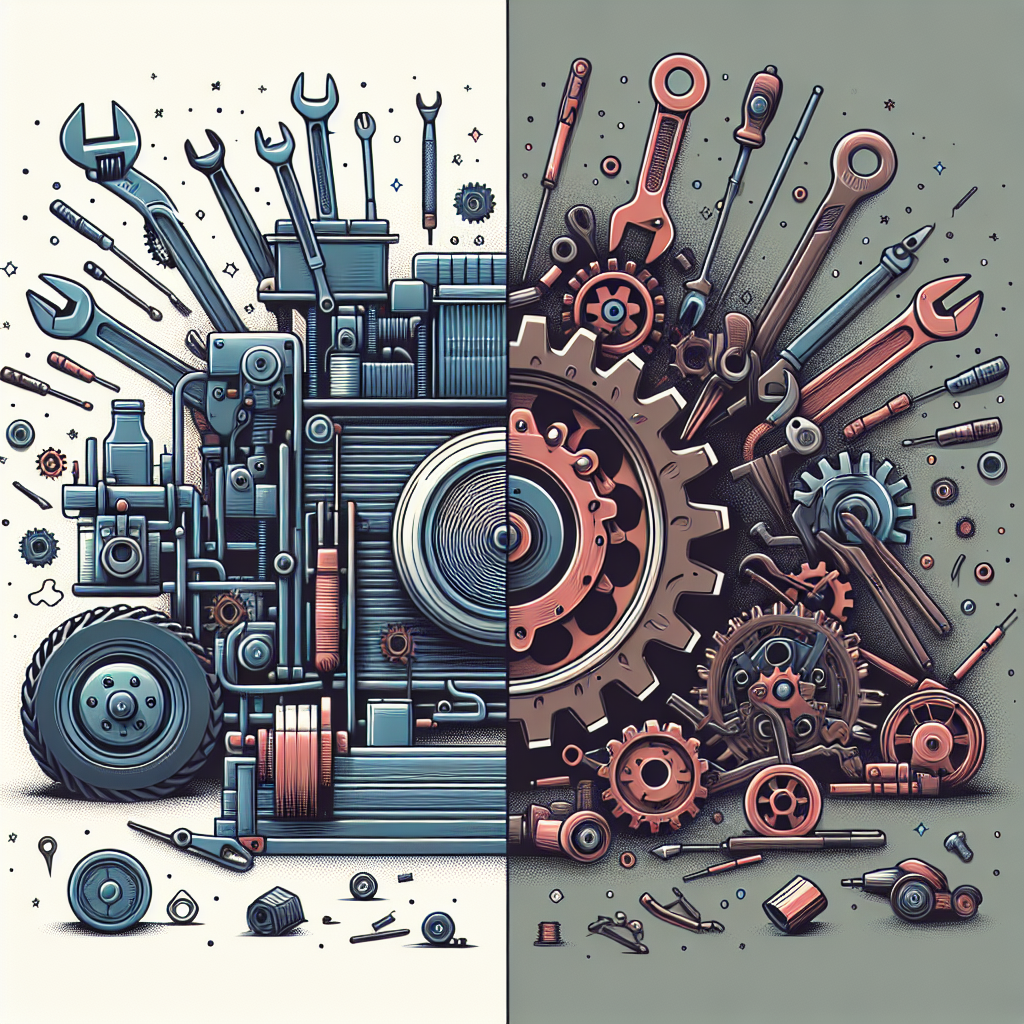
Proactive vs. Reactive Maintenance: Why Being Proactive is Crucial
Maintenance is an essential aspect of keeping any system running smoothly and efficiently. However, there are two main approaches to maintenance: proactive and reactive. Proactive maintenance involves taking preventative measures to avoid breakdowns and issues before they occur, while reactive maintenance involves fixing issues as they arise.While reactive maintenance may seem like a quick and easy solution to problems, it is often more costly and time-consuming in the long run. When equipment breaks down unexpectedly, it can lead to costly repairs, downtime, and lost productivity. In contrast, proactive maintenance allows for scheduled maintenance and inspections to identify and address potential issues before they become major problems.
Being proactive with maintenance not only saves time and money but also helps to prolong the lifespan of equipment and machinery. By regularly monitoring and maintaining equipment, businesses can avoid costly repairs and replacements, as well as reduce the risk of unexpected downtime.
Proactive maintenance also promotes a safer work environment. By addressing potential safety hazards before they cause harm, businesses can prevent accidents and injuries in the workplace. This not only protects employees but also helps to maintain compliance with health and safety regulations.
Furthermore, being proactive with maintenance can improve overall efficiency and productivity. When equipment is properly maintained and running smoothly, it can operate at peak performance levels, leading to increased productivity and output. This can ultimately result in higher profits and a competitive edge in the market.
In conclusion, being proactive with maintenance is crucial for businesses to ensure the smooth operation of equipment, reduce costs, maintain a safe work environment, and improve overall efficiency and productivity. By investing in proactive maintenance strategies, businesses can protect their assets, employees, and bottom line.
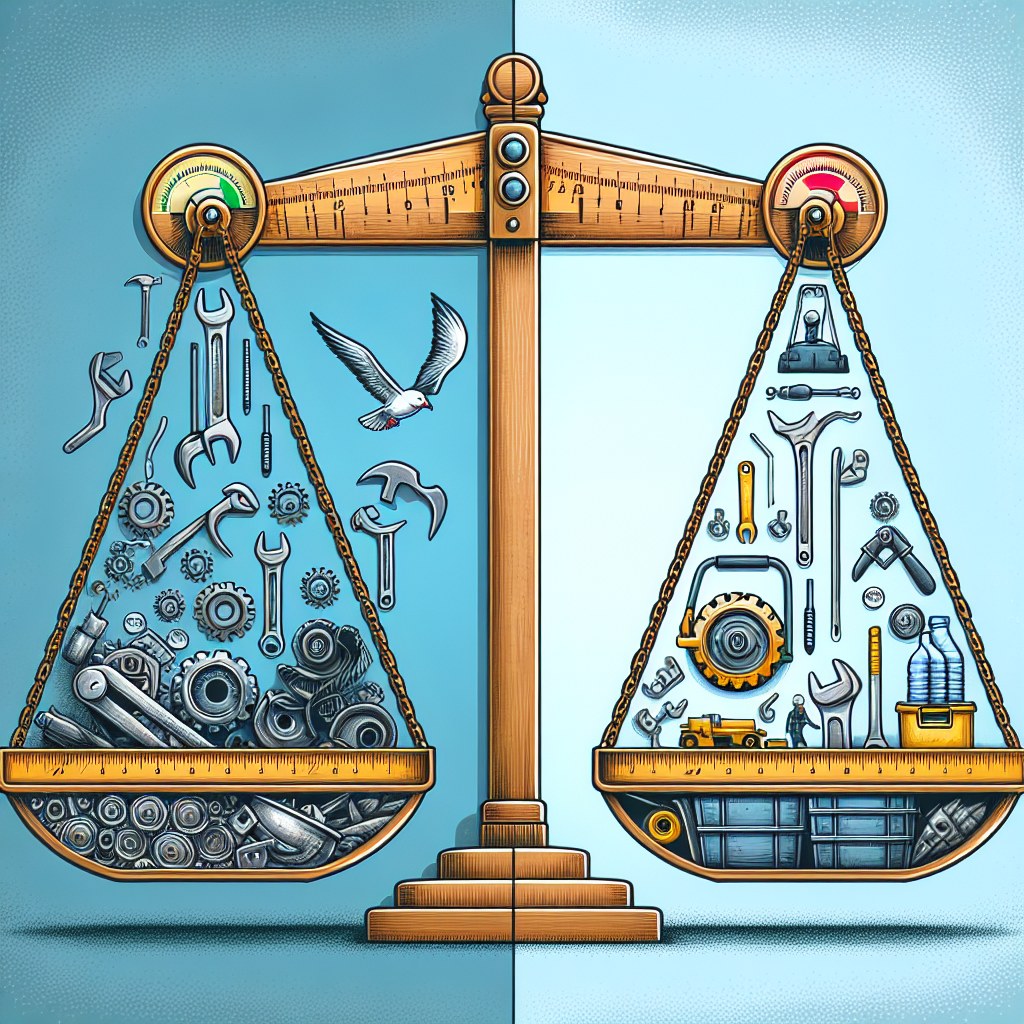
From Reactive to Proactive: Transforming Your Maintenance Approach
Maintenance is a critical aspect of any business operations, ensuring that equipment and assets are functioning at their best to prevent costly downtime and repairs. However, many companies still take a reactive approach to maintenance, only addressing issues after they have already caused problems. This can lead to increased costs, decreased productivity, and ultimately, a negative impact on the bottom line.To combat these challenges, more and more businesses are shifting towards a proactive maintenance approach. This involves identifying potential issues before they occur, implementing preventive measures, and continuously monitoring equipment to ensure optimal performance. By making this shift, companies can not only save money and time but also improve overall efficiency and reliability.
One of the key steps in transitioning from reactive to proactive maintenance is to establish a comprehensive maintenance plan. This plan should outline regular inspection schedules, routine maintenance tasks, and predictive maintenance techniques to identify and address potential issues early on. By having a proactive maintenance plan in place, businesses can better anticipate and prevent equipment failures, reducing the risk of costly repairs and downtime.
Another important aspect of proactive maintenance is the use of technology. Many companies are now turning to advanced software and tools to streamline their maintenance processes, track equipment performance, and predict potential failures. By leveraging technology, businesses can automate maintenance tasks, improve decision-making, and optimize resource allocation, ultimately leading to more efficient operations and increased productivity.
Additionally, training and empowering maintenance staff is crucial in transitioning to a proactive approach. By providing ongoing training and education, employees can better understand the importance of preventive maintenance and be equipped with the skills and knowledge needed to identify and address potential issues proactively. Empowering maintenance staff to take ownership of equipment maintenance can also lead to increased accountability and improved outcomes.
In conclusion, transitioning from a reactive to proactive maintenance approach is essential for businesses looking to optimize their operations and minimize downtime. By establishing a comprehensive maintenance plan, leveraging technology, and empowering maintenance staff, companies can improve equipment reliability, reduce costs, and ultimately, enhance overall business performance. Making the shift to proactive maintenance may require an initial investment of time and resources, but the long-term benefits far outweigh the costs.
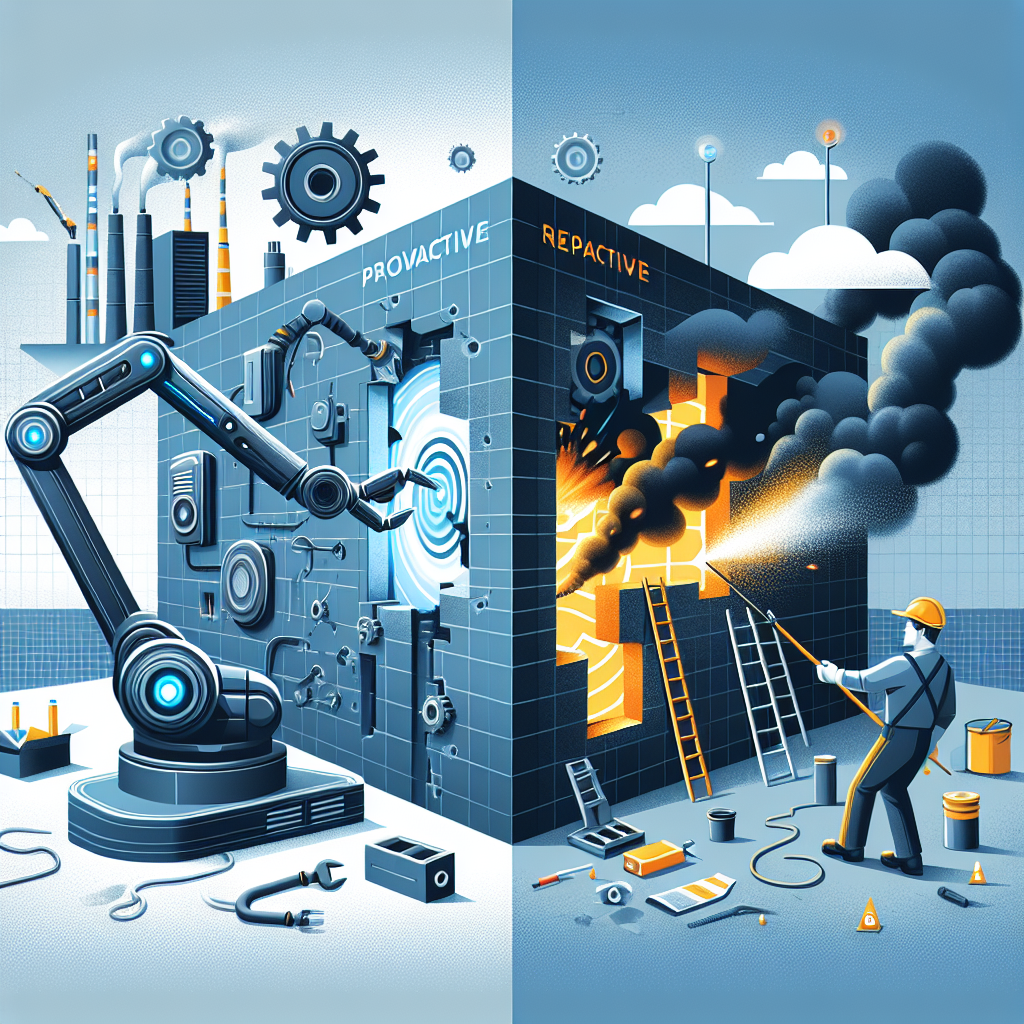
Proactive Maintenance vs. Reactive Maintenance: Which is Right for Your Business?
As a business owner or manager, one of the key decisions you’ll have to make when it comes to maintaining your equipment and assets is whether to take a proactive or reactive approach. Both proactive and reactive maintenance strategies have their own benefits and drawbacks, so it’s important to consider which one is right for your business.Proactive maintenance involves regularly scheduled inspections, maintenance, and repairs to prevent breakdowns and extend the lifespan of your equipment. By taking a proactive approach, you can identify and address potential issues before they become major problems, saving time and money in the long run. This can help minimize downtime, improve efficiency, and reduce the risk of costly emergency repairs.
On the other hand, reactive maintenance involves waiting until equipment breaks down before taking action. While this approach may seem more cost-effective in the short term, it can lead to increased downtime, lost productivity, and higher repair costs. Reactive maintenance can also result in a negative impact on customer satisfaction and damage to your company’s reputation.
So, which approach is right for your business? The answer depends on a variety of factors, including the size and complexity of your operations, the criticality of your equipment, and your budget constraints. In general, proactive maintenance is recommended for businesses that rely heavily on their equipment for day-to-day operations or have high-value assets that require regular upkeep.
However, if your business has limited resources or operates in a less demanding environment, reactive maintenance may be a more practical option. In some cases, a combination of both proactive and reactive maintenance strategies may be the most effective approach, allowing you to address immediate issues while also planning ahead for future maintenance needs.
Ultimately, the key to successful maintenance management is finding the right balance between proactive and reactive strategies. By investing in regular maintenance and monitoring, you can prevent costly breakdowns and ensure that your equipment operates at peak performance. Whether you choose to take a proactive or reactive approach, the important thing is to prioritize maintenance as a critical aspect of your business operations.
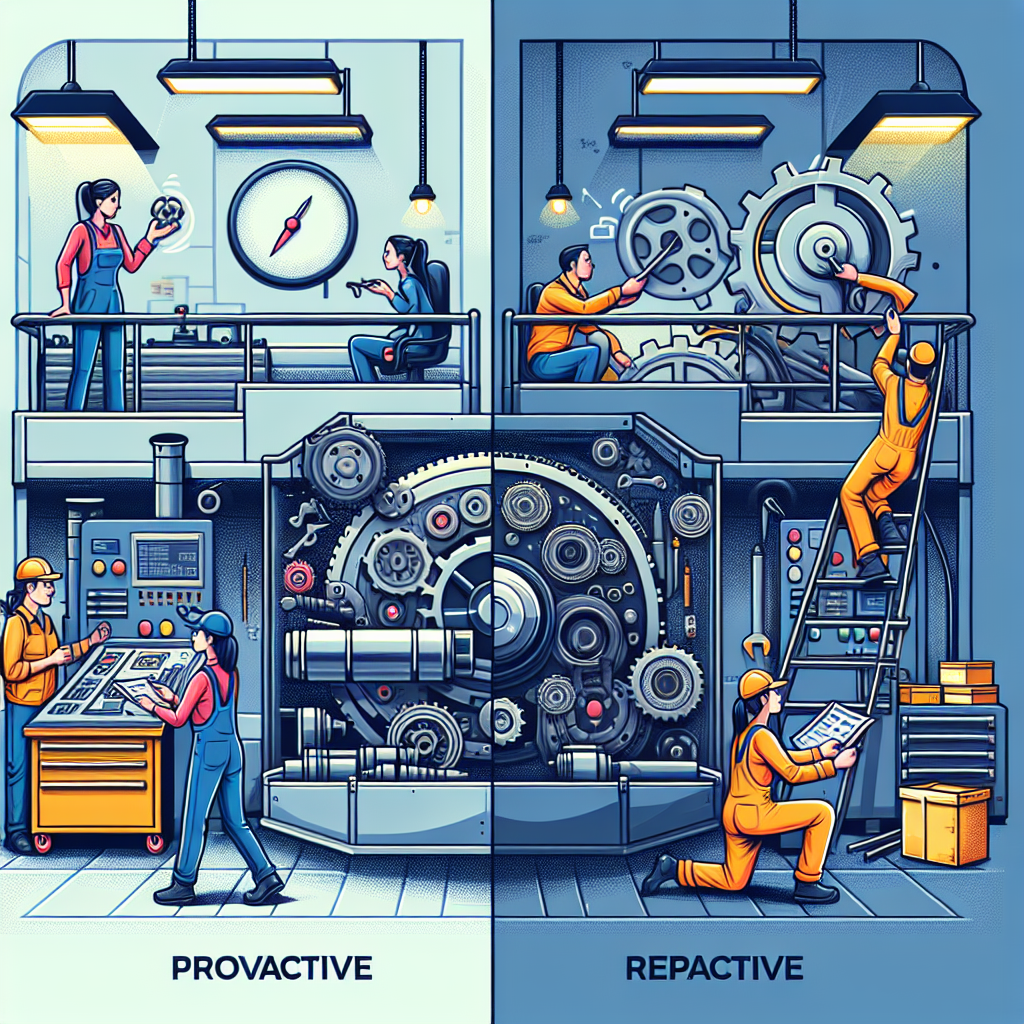
Proactive vs. Reactive Maintenance: The Case for Proactive Strategies
Maintenance is an essential aspect of any business operation, ensuring that equipment and facilities are running smoothly and efficiently. When it comes to maintenance strategies, two approaches are commonly employed: proactive and reactive maintenance.Reactive maintenance is a traditional approach where repairs are only carried out after a piece of equipment or machinery has already broken down. This can lead to costly downtime, unexpected expenses, and disruptions to production schedules. On the other hand, proactive maintenance involves regularly scheduled inspections, preventative maintenance, and predictive maintenance techniques to prevent breakdowns before they occur.
There are several advantages to implementing a proactive maintenance strategy over a reactive one. One of the key benefits is cost savings. By regularly inspecting and maintaining equipment, businesses can identify and address issues before they escalate into major problems. This can help avoid costly repairs, replacements, and downtime, ultimately saving money in the long run.
Proactive maintenance can also improve equipment reliability and longevity. By keeping equipment in optimal condition, businesses can extend the lifespan of their assets and reduce the need for frequent repairs or replacements. This can improve overall efficiency, productivity, and performance, leading to a more reliable operation.
Additionally, proactive maintenance can help businesses better plan and schedule maintenance activities. By conducting regular inspections and monitoring equipment performance, businesses can identify trends and patterns that can help them anticipate maintenance needs and plan ahead. This can help minimize disruptions to production schedules and ensure that maintenance activities are carried out in a timely manner.
Furthermore, proactive maintenance can enhance safety in the workplace. By regularly inspecting and maintaining equipment, businesses can identify and address potential safety hazards before they pose a risk to employees. This can help create a safer work environment and reduce the likelihood of accidents and injuries.
In conclusion, while reactive maintenance may seem like a cost-effective approach in the short term, the benefits of proactive maintenance far outweigh the drawbacks. By implementing a proactive maintenance strategy, businesses can save money, improve equipment reliability, increase productivity, and enhance safety in the workplace. Ultimately, proactive maintenance is a smart investment that can help businesses achieve long-term success and sustainability.
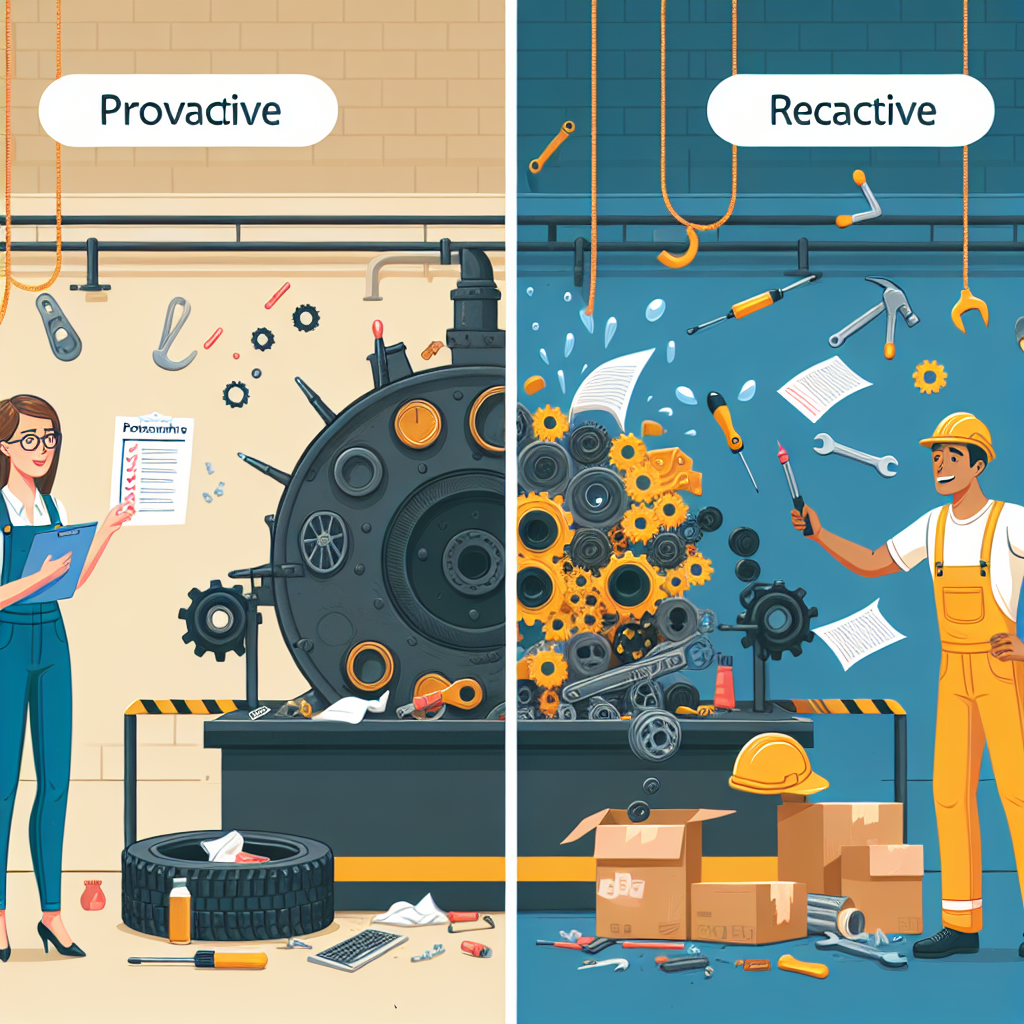
Proactive vs. Reactive Maintenance: Why Proactive is the Way to Go
When it comes to maintaining equipment and machinery, there are two main approaches: proactive maintenance and reactive maintenance. Proactive maintenance involves regularly scheduled inspections and repairs to prevent breakdowns, while reactive maintenance involves fixing things only after they have already broken down. While both approaches have their pros and cons, proactive maintenance is generally considered the more effective and efficient option.One of the main advantages of proactive maintenance is that it helps to prevent costly breakdowns. By regularly inspecting and repairing equipment before it fails, proactive maintenance can help to identify and address potential issues before they become major problems. This can help to avoid costly repairs and downtime, as well as extend the lifespan of equipment.
Proactive maintenance also helps to improve overall equipment reliability and performance. By keeping equipment in good working condition, proactive maintenance can help to ensure that it operates at peak efficiency and productivity. This can help to increase production output and reduce the risk of unexpected breakdowns and disruptions.
In addition, proactive maintenance can help to improve workplace safety. By regularly inspecting and maintaining equipment, proactive maintenance can help to identify and address potential safety hazards before they cause accidents or injuries. This can help to create a safer work environment for employees and reduce the risk of costly liability claims.
On the other hand, reactive maintenance can be costly and inefficient. When equipment breaks down unexpectedly, it can lead to costly repairs, downtime, and lost productivity. In addition, reactive maintenance can often result in rushed repairs and temporary fixes that may not fully address the underlying issue, leading to more breakdowns in the future.
Overall, proactive maintenance is the way to go when it comes to maintaining equipment and machinery. By regularly inspecting and repairing equipment before it fails, proactive maintenance can help to prevent costly breakdowns, improve reliability and performance, and enhance workplace safety. While reactive maintenance may seem like a more cost-effective option in the short term, the long-term benefits of proactive maintenance far outweigh the drawbacks. By investing in proactive maintenance, businesses can save time, money, and headaches in the long run.
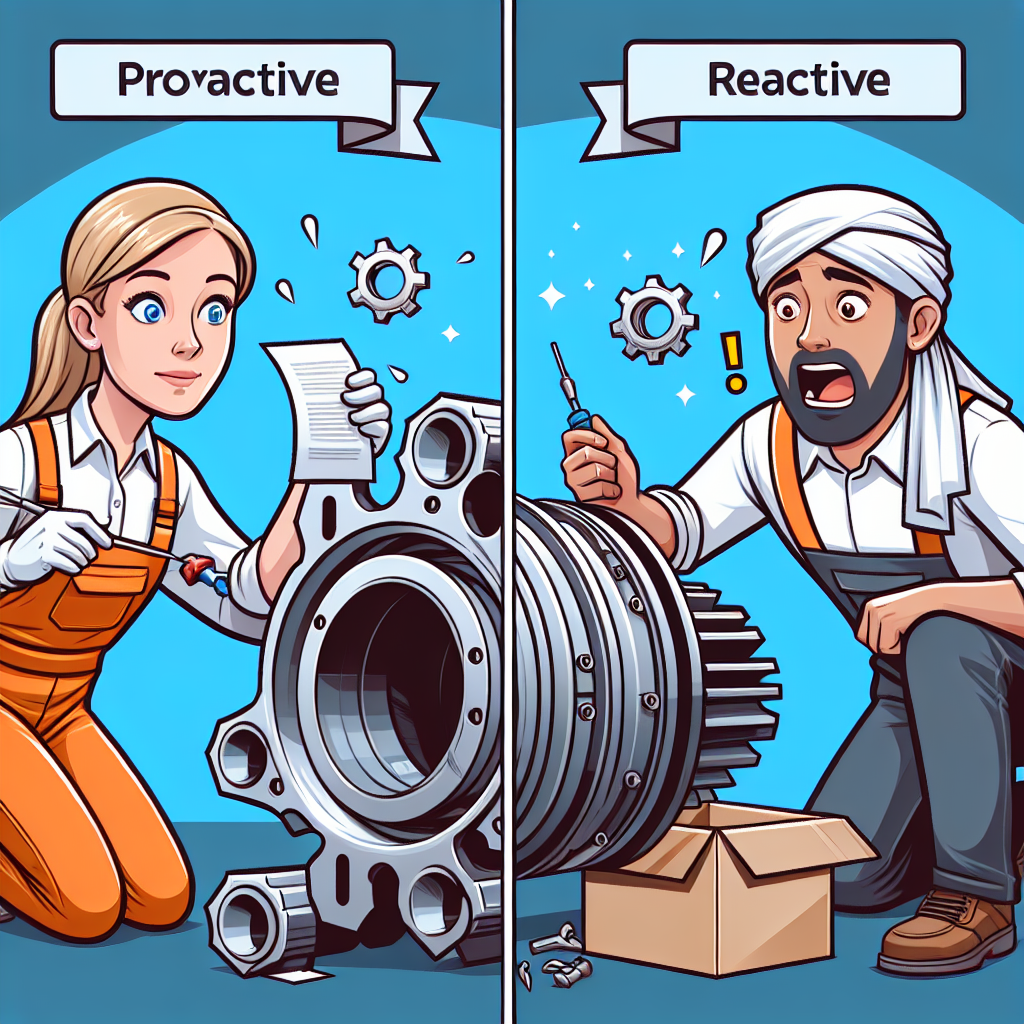
Proactive Maintenance vs. Reactive Maintenance: Understanding the Difference
Maintenance is a crucial aspect of keeping equipment and machinery running smoothly and efficiently. There are two main approaches to maintenance: proactive maintenance and reactive maintenance. Understanding the differences between these two approaches can help businesses make informed decisions about how to best maintain their equipment.Proactive maintenance, also known as preventative maintenance, involves regularly scheduled inspections, maintenance, and repairs to prevent breakdowns and equipment failures before they occur. This approach focuses on identifying and addressing potential issues before they become major problems. Proactive maintenance often involves tasks such as lubrication, cleaning, and replacing worn parts on a regular basis.
By taking a proactive approach to maintenance, businesses can minimize downtime, reduce repair costs, and extend the lifespan of their equipment. Proactive maintenance also helps improve safety and reliability by identifying potential hazards and addressing them before they cause accidents or injuries.
On the other hand, reactive maintenance involves fixing equipment only after it has already broken down or malfunctioned. This approach is often more costly and time-consuming than proactive maintenance, as it typically requires emergency repairs and can result in unplanned downtime. Reactive maintenance can also lead to more frequent breakdowns and shorter equipment lifespan, as issues are not addressed until they become major problems.
While reactive maintenance may be necessary in some situations, such as when equipment failure is unpredictable or unavoidable, relying solely on this approach can be costly and inefficient. By implementing a proactive maintenance program, businesses can save time and money in the long run by preventing breakdowns and addressing issues before they escalate.
In conclusion, proactive maintenance and reactive maintenance are two different approaches to maintaining equipment and machinery. Proactive maintenance involves regularly scheduled inspections and maintenance to prevent breakdowns and extend equipment lifespan, while reactive maintenance involves fixing equipment only after it has already broken down. By understanding the differences between these two approaches, businesses can make informed decisions about how to best maintain their equipment and minimize downtime and repair costs.
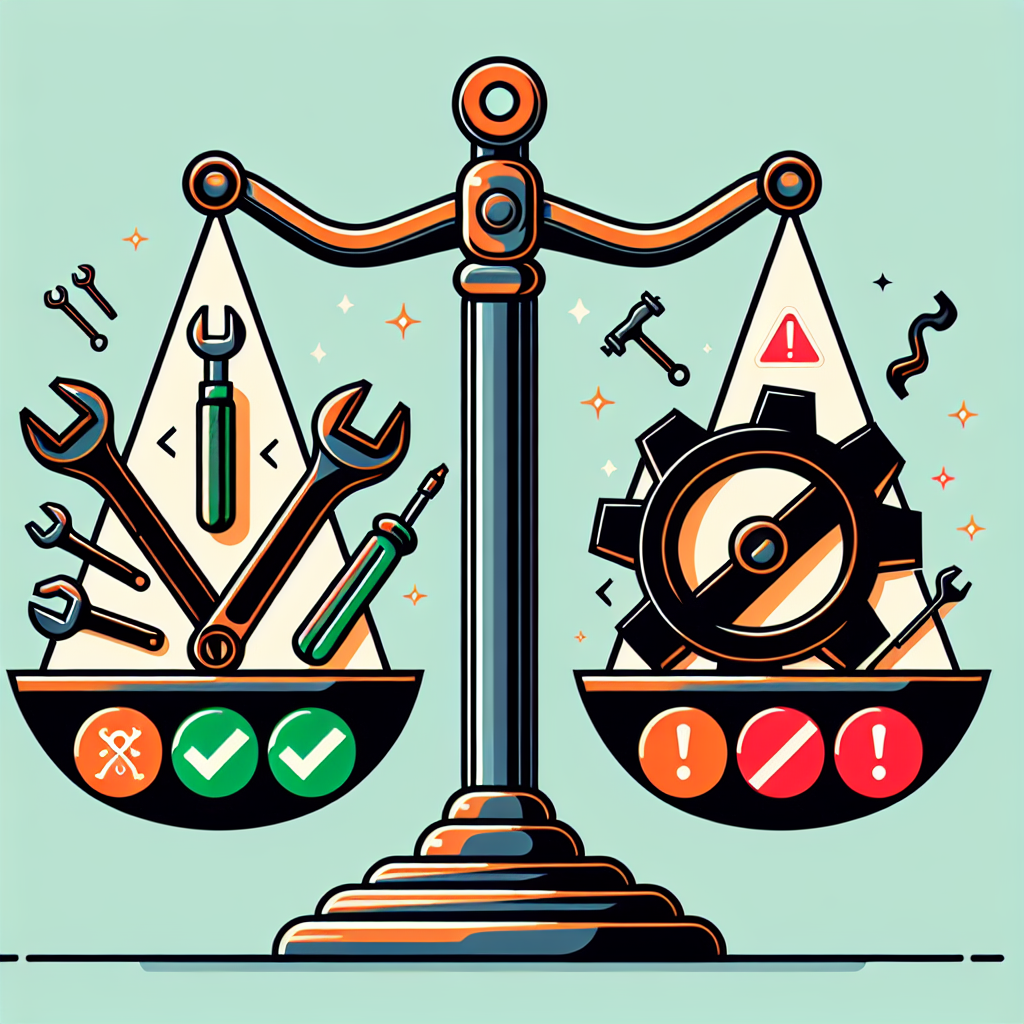
Proactive Maintenance vs. Reactive Maintenance: Why Prevention is Key
Maintenance is an essential aspect of keeping equipment and machinery in optimal working condition. However, there are two main approaches to maintenance: reactive maintenance and proactive maintenance. While both are important, proactive maintenance is often preferred for its numerous benefits over reactive maintenance.Reactive maintenance, also known as run-to-failure maintenance, involves waiting for equipment to break down before taking action. This approach may seem cost-effective in the short term, as it requires minimal planning and investment upfront. However, reactive maintenance can result in costly downtime, emergency repairs, and reduced equipment lifespan. In addition, unexpected breakdowns can disrupt operations and lead to safety hazards for workers.
On the other hand, proactive maintenance, also known as preventive maintenance, involves regularly scheduled inspections, repairs, and replacements to prevent equipment failure before it occurs. By implementing a proactive maintenance program, organizations can reduce the likelihood of unexpected breakdowns, extend the lifespan of equipment, and optimize performance. Proactive maintenance also allows for better planning and budgeting, as maintenance tasks are scheduled in advance.
Prevention is key when it comes to maintenance, and proactive maintenance is the best way to prevent costly breakdowns and repairs. By identifying and addressing potential issues before they escalate, organizations can save time, money, and resources in the long run. In addition, proactive maintenance can improve equipment reliability, reduce downtime, and enhance overall productivity.
In conclusion, proactive maintenance is a proactive approach to equipment maintenance that focuses on prevention rather than reaction. By implementing a proactive maintenance program, organizations can reduce the risk of unexpected breakdowns, improve equipment performance, and save time and money on repairs. Ultimately, prevention is key when it comes to maintenance, and proactive maintenance is the best way to ensure that equipment remains in optimal working condition.
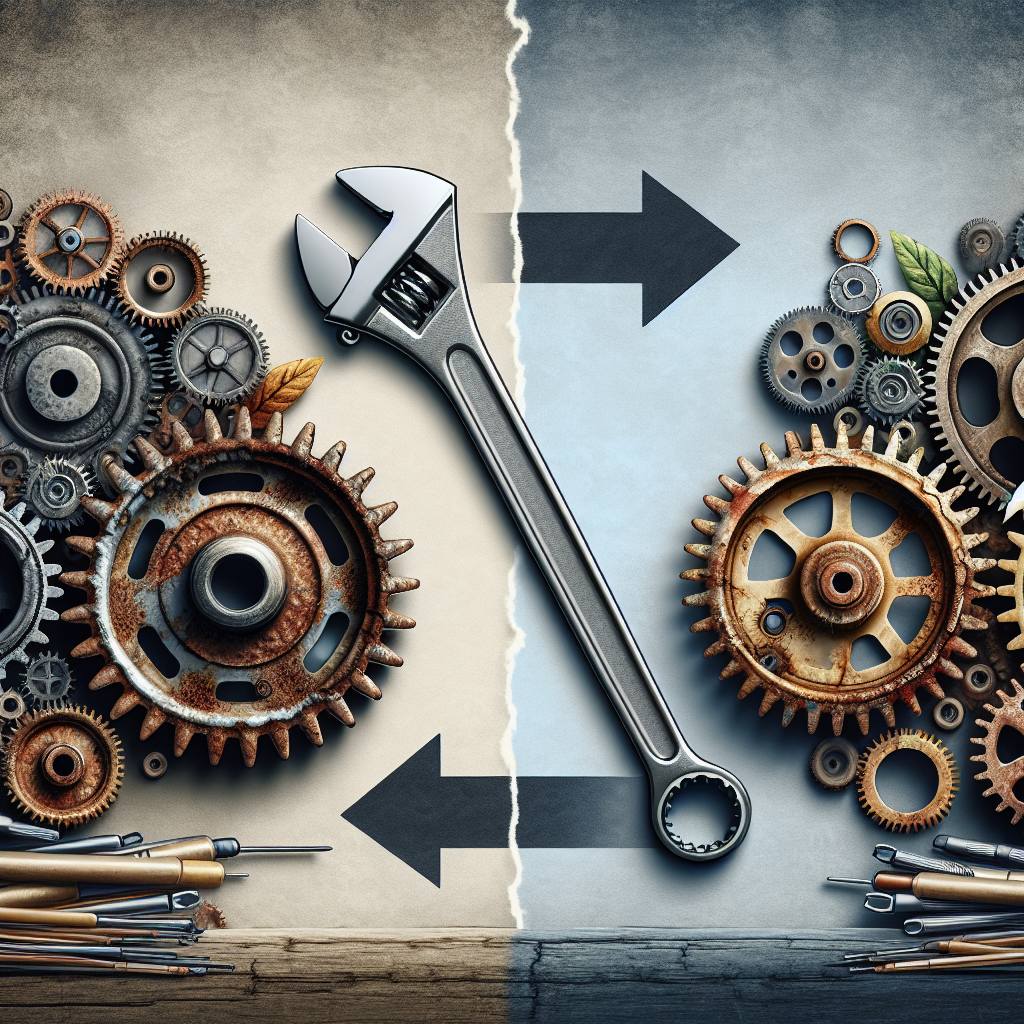
From Reactive to Proactive: How to Transition Your Maintenance Approach
Maintenance is a crucial aspect of keeping equipment and facilities running smoothly and efficiently. In the past, maintenance has often been a reactive process, where issues are only addressed once they have already caused a problem or breakdown. However, this approach can lead to costly downtime, repairs, and potential safety hazards. To avoid these issues, many organizations are now transitioning to a proactive maintenance approach.Proactive maintenance involves anticipating potential issues before they occur and taking preventive measures to address them. This shift in mindset can help organizations save time and money in the long run by avoiding costly repairs and downtime. Here are some steps you can take to transition from a reactive to a proactive maintenance approach:
1. Conduct regular inspections and assessments: Regularly inspecting equipment and facilities can help identify potential issues before they become major problems. This can include checking for signs of wear and tear, leaks, or other issues that could lead to a breakdown.
2. Implement a preventive maintenance schedule: Create a schedule for routine maintenance tasks, such as changing filters, lubricating moving parts, or cleaning equipment. By following a preventive maintenance schedule, you can address minor issues before they escalate into major problems.
3. Invest in technology: Utilize technology such as sensors, monitoring systems, and predictive maintenance software to track equipment performance and predict potential issues. These tools can help you identify trends and patterns that can indicate when maintenance is needed.
4. Train your team: Ensure that your maintenance team is properly trained on proactive maintenance techniques and best practices. Provide ongoing training and support to help them identify potential issues and take preventive action.
5. Establish key performance indicators: Set key performance indicators (KPIs) to measure the effectiveness of your proactive maintenance program. Track metrics such as equipment uptime, maintenance costs, and mean time between failures to evaluate the success of your efforts.
By transitioning from a reactive to a proactive maintenance approach, organizations can improve equipment reliability, reduce downtime, and increase operational efficiency. While the shift may require an initial investment of time and resources, the long-term benefits can far outweigh the costs. By implementing regular inspections, preventive maintenance schedules, technology, training, and KPIs, organizations can proactively address maintenance issues and ensure that their equipment and facilities are running smoothly and efficiently.
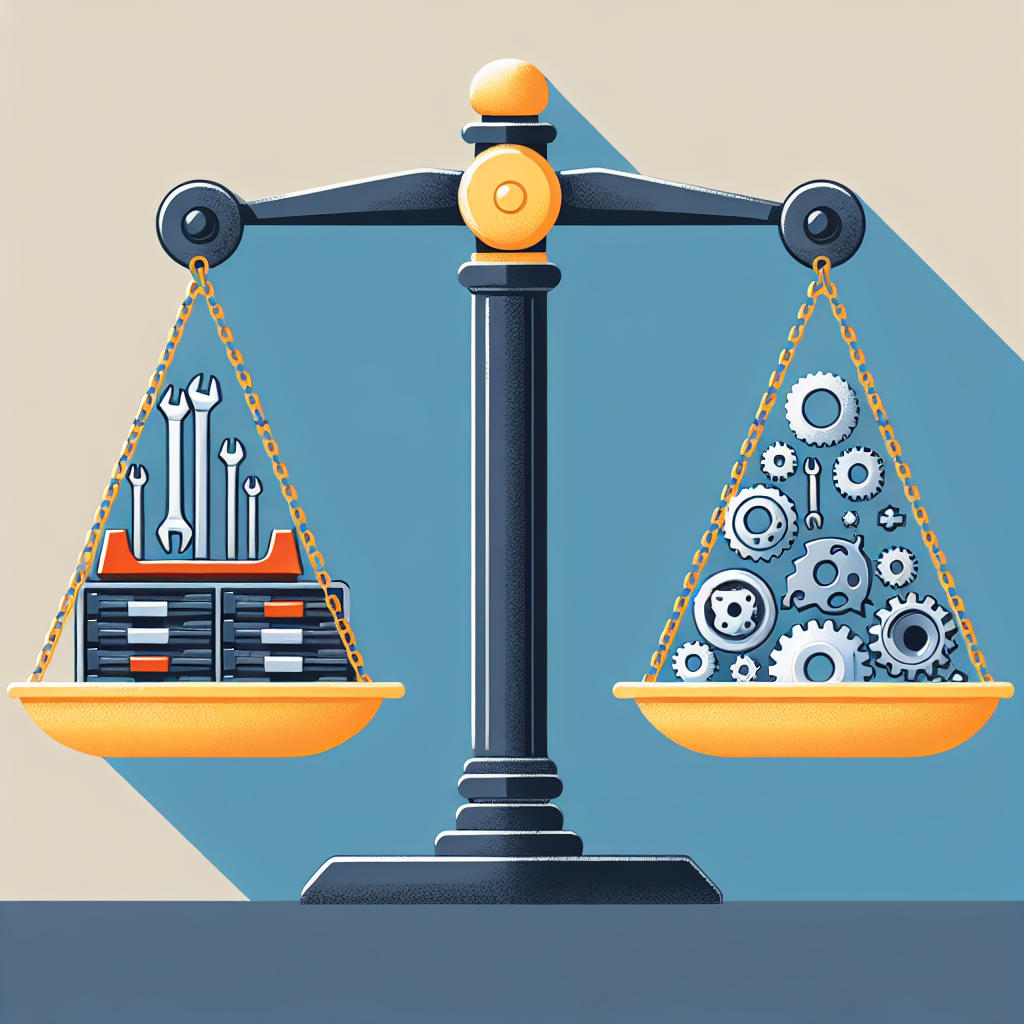
Proactive Maintenance vs Reactive Maintenance: Why Prevention is Key
Maintenance is an essential aspect of keeping equipment, machinery, and infrastructure in good working condition. There are two main approaches to maintenance: proactive maintenance and reactive maintenance. While both are important, proactive maintenance is increasingly being recognized as the superior approach due to its focus on prevention rather than reaction.Reactive maintenance, also known as “run-to-failure” or “breakdown maintenance,” involves waiting for equipment to fail and then fixing it. This approach can be costly and time-consuming, as well as disruptive to operations. It often results in unexpected downtime, lost productivity, and higher repair costs. Additionally, reactive maintenance can lead to safety hazards and environmental damage if equipment fails unexpectedly.
On the other hand, proactive maintenance, also known as preventative maintenance, focuses on preventing equipment failures before they occur. This approach involves regular inspections, testing, and servicing of equipment to identify and address potential issues before they escalate. By taking a proactive approach, maintenance teams can reduce the likelihood of breakdowns, extend the lifespan of equipment, and improve overall reliability and performance.
There are several key reasons why prevention is key when it comes to maintenance. First and foremost, proactive maintenance helps to minimize downtime and disruptions to operations. By addressing potential issues before they cause equipment failures, organizations can avoid costly downtime and maintain productivity levels.
Secondly, proactive maintenance can help to reduce maintenance costs in the long run. By regularly servicing equipment and replacing worn parts, organizations can prevent major breakdowns that require expensive repairs or replacements. This can result in significant cost savings over time.
Additionally, proactive maintenance can improve safety and compliance. By ensuring that equipment is well-maintained and in good working condition, organizations can reduce the risk of accidents, injuries, and environmental incidents. This not only protects employees and assets but also helps organizations meet regulatory requirements and industry standards.
In conclusion, while both proactive and reactive maintenance are important, prevention is key when it comes to maintaining equipment and infrastructure. By taking a proactive approach to maintenance, organizations can minimize downtime, reduce costs, improve safety, and enhance overall performance. Investing in proactive maintenance strategies can ultimately lead to a more efficient, reliable, and sustainable operation.
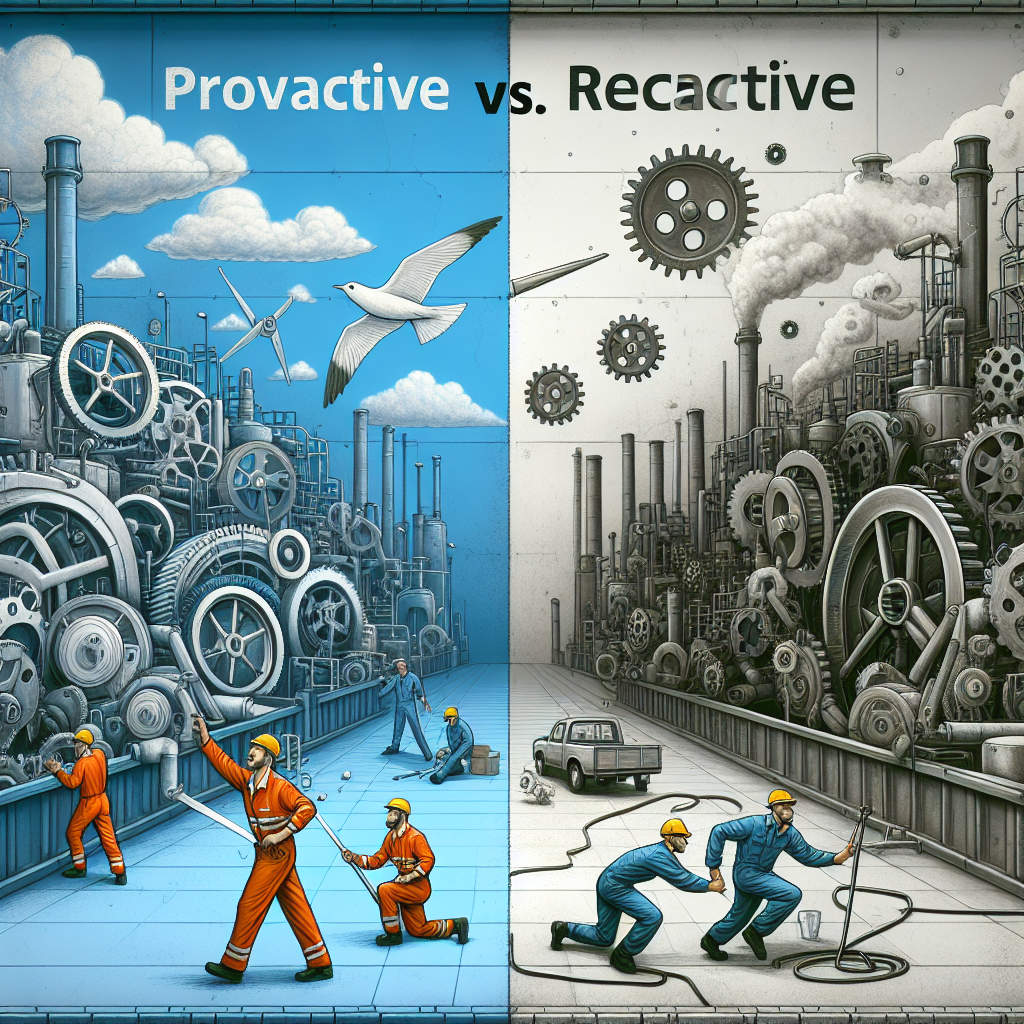
Proactive vs. Reactive Maintenance: The Case for Being Proactive
Maintenance is a crucial aspect of any business operation, as it ensures that equipment and machinery are functioning at their optimal level. When it comes to maintenance strategies, there are two main approaches: proactive and reactive maintenance. While both have their merits, there is a strong case for being proactive when it comes to maintaining equipment.Proactive maintenance involves regularly scheduled inspections and preventive measures to keep equipment in good working condition. This approach aims to identify and address potential issues before they become major problems, ultimately reducing downtime and increasing the lifespan of equipment.
On the other hand, reactive maintenance involves addressing issues only when they arise, often resulting in unexpected breakdowns and costly repairs. While reactive maintenance may seem like a cost-effective approach in the short term, it can lead to higher overall costs in the long run due to lost productivity and increased repair expenses.
There are several reasons why being proactive with maintenance is the better choice for businesses. First and foremost, proactive maintenance helps to prevent costly breakdowns and repairs by addressing issues before they escalate. By regularly inspecting equipment and performing preventive maintenance tasks, businesses can avoid unexpected downtime and keep operations running smoothly.
Additionally, proactive maintenance can help to improve the overall efficiency and performance of equipment. By keeping machinery in good working condition, businesses can ensure that they are operating at their optimal level, leading to increased productivity and profitability.
Furthermore, proactive maintenance can also help to extend the lifespan of equipment. By regularly servicing and maintaining machinery, businesses can prolong the life of their assets and reduce the need for costly replacements.
Overall, being proactive with maintenance is a wise investment for businesses looking to reduce costs, improve efficiency, and maximize the lifespan of their equipment. By taking a proactive approach to maintenance, businesses can avoid costly breakdowns, improve performance, and ultimately, increase their bottom line.
